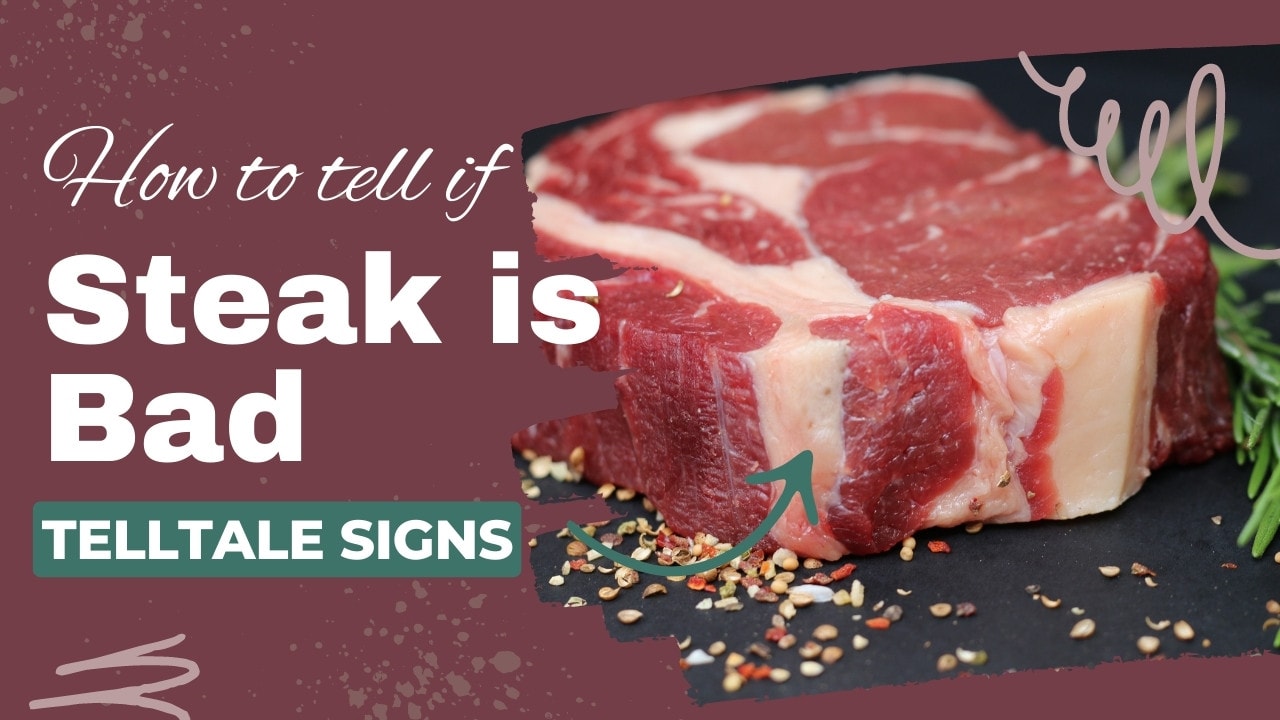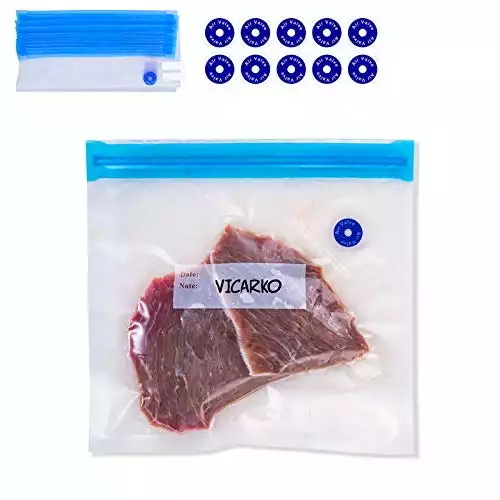Who doesn’t love a perfectly cooked steak? Whether you enjoy it for Sunday dinner or a special occasion with family or friends, it’s hard to resist the savory entree.
But, do you know how to tell if steak is bad? A spoiled steak should not be confused with a dry-aged steak, which may have a strong odor that many find off-putting. Still, there are certain things you should look for in a fresh or dry-aged steak to help you decide if it is good or bad.
We will take a look at all the signs of a spoiled steak so you will be able to enjoy a delicious meal without having to worry about digestive issues afterward.
How To Tell If Steak Is Bad?
The easiest way to tell if a steak is bad is to smell it. If the meat smells rotten or unpleasant, it is likely bad. Fresh meat has a very mild scent and while not everyone finds it appealing, it should not be strong or unpleasant enough to turn you away.
Of course, it’s not guaranteed that meat is safe to eat even if it doesn’t smell bad. Some bacteria or pathogens can reproduce, die, and leave toxins behind without an accompanying foul smell. But if meat smells and looks fresh and you trust it’s been handled properly, it’s a good bet that it’s safe to eat.
What Does A Bad Steak Look Like?
The appearance of a steak will change as it begins to rot and break down. The color will change from a bright pink or red to a grayish brown and, eventually, a yellow or green color.
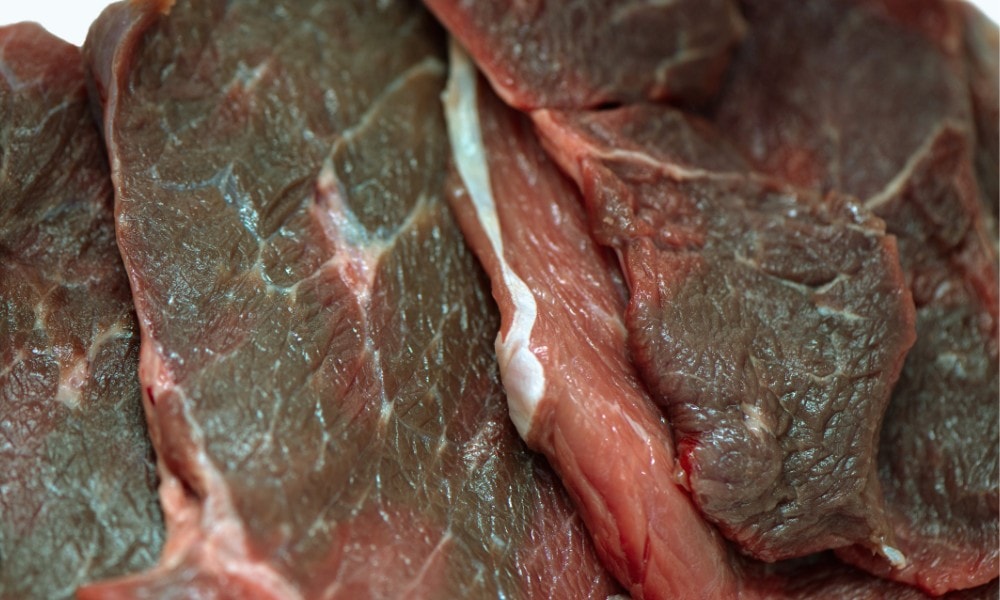
In a spoiled steak, the entire piece of meat will not always change color but there could be small sections of the meat that appear green or yellow.
As you’ll see from the video below, brownish or oxidized meat doesn’t necessarily mean it’s gone bad. But it does mean that it’s had time to sit exposed to air since it was cut, and may not be very fresh.
Even though the discolored or rotten parts may be small, it’s still best to throw the whole steak away. Some people may be tempted to cut off the discolored section and eat the rest, but there could be bacteria and toxins throughout the entire steak that could make you sick if eaten.
In addition to seeing color changes on the meat, you may also see that it looks either really dry or really slimy.
How Does A Bad Steak Smell?
The smell of a bad steak is strong and unpleasant. It has a rotten or decaying odor that may even turn your stomach.
Some people also notice a sour odor coming from spoiled steak similar to rotten eggs. Fresh steak should have a very mild scent or no scent at all. Fresh steak or even dry aged steak will not have a strong odor.
Even if the steak is cooked, it could still smell off odor if it has gone bad. A strong ammonia-like aroma or a pungent acidic odor may come from the meat as it cooks, even overpowering seasonings and marinades.
You should never eat meat that smells off, even if it’s been fully cooked. Even if the bacteria are killed off in the cooking process, they can leave toxins behind that can still make you sick.
How Does A Bad Steak Feel?
A fresh steak will have a firm texture and will be moist to the touch, but not slimy. If you poke a fresh steak it will have some resistance and should bounce back.
A very bad steak will feel mushy and may even start to fall apart. It will not hold its shape or have a firm texture when you pick it up or move it to a plate or pan. It may feel fuzzy, dry, or slimy on the outside.
The slimy texture means that bacteria is growing on the outside of the steak. If you have marinated your steak it might be hard to notice the slime or dry texture.
How Long Does Steak Stay Fresh?
Steak that is wrapped properly and refrigerated will stay fresh for up to 7 days. Certain types of marinade can also help prolong the freshness of a steak for an extra day or two.
According to the USDA, a cooked steak can last up to 4 days if refrigerated right after cooking. Steak that was fresh when cooked can still go bad quickly after cooking if it’s not handled properly.
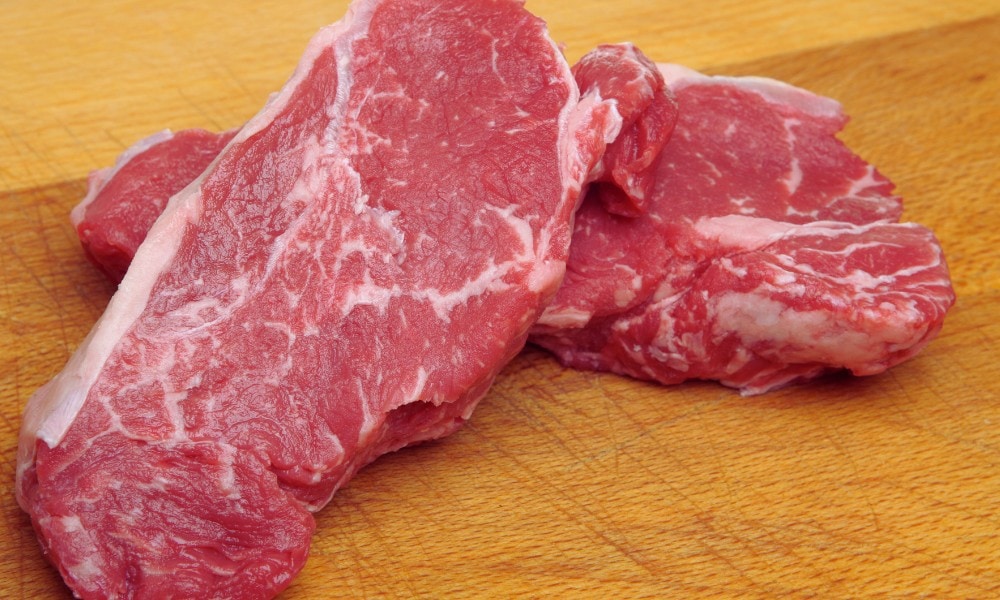
The cut of meat also plays a role in how long a steak lasts. Thicker steaks tend to last two to three days longer than thinner cuts.
You can also check the sell-by date of raw steaks to get an idea of the steak’s safe use-by date. This is just a guess of how long the steak should last before it is bad or spoiled but gives you a guideline.
In Detail: How Long Can Steak Sit Out?
How Long Does Steak Last In A Freezer?
A frozen steak that is wrapped in an airtight plastic or stored in an airtight, sealed container may last up to a year in the freezer. Before you freeze a steak, check it to make sure it is fresh and there are no signs of rot.
Freezing a steak that has gone bad will not preserve it or kill any bacteria that may be growing on it.
Of course, if you freeze a steak for too long, or too much air works into the packaging, it may become freezer burned. This can change the taste and texture of the steak and may even make it less appetizing, but it will not necessarily mean that you cannot consume it safely.
If the raw steak smells bad after it has thawed or has a slimy appearance, do not cook or eat it. Bacteria can grow in the freezer – they reproduce more slowly, but it’s not impossible for some species to contaminate food even while frozen.
Can Eating A Bad Steak Make You Sick?
Any type of bad meat, including raw steak, can make you sick if you consume it. The same bacteria that makes the meat go bad can cause food poisoning, upset stomach, or severe digestive issues.
Some symptoms of food poisoning include,
Severe cases of food poisoning may require hospitalization and in some cases can be fatal. Foodborne illnesses caused by parasites, viruses, and mycotoxins can also come from improperly handled meat.
What Happens If You Cook A Steak That Has Gone Bad?
While cooking meat at high temperatures can kill many bacteria, it’s never safe to eat a steak that has gone bad, even if you cook it.
Bacteria such as staphylococcus, clostridium, E. coli, and salmonella can survive in a cooked steak, especially if you only cook your steak to medium or rare.
As funguses and bacteria metabolize the proteins in a steak, they release toxins that can also make you sick. Even if you kill the bacteria and microorganisms that grow on spoiled meat, you won’t be able to cook out the toxins.
If you know a steak has gone bad, it’s better to throw it away than to try cooking it and risk foodborne illness.
How Do You Keep A Steak From Going Bad?
Steak has a fairly short shelf life. But if you are able to wrap it and store it properly it could last up to a week in the refrigerator. There are some things you can do to keep your steak fresher longer.
Storage
Keeping your steak from being exposed to air can help reduce the chances of it coming into contact with mold spores or bacteria. Wrap the steak tightly in plastic wrap or vacuum-sealed bags and place it in the coldest part of your refrigerator.
✅ Compatible with most handheld vacuum sealer machines
✅ Slow down food spoilage
✅ Multi-layered BPA-FREE non-toxic material
Tip: The bottom shelf of your refrigerator is usually the coldest part, since heat rises.
Temperature
Steak must be kept at between 32 and 40 degrees to stay fresh. At this temperature range, bacteria growth is slowed and other microorganisms are not likely to spread.
Make sure your refrigerator is able to keep the steak at this temperature or consider freezing the steak until you are ready to cook it.
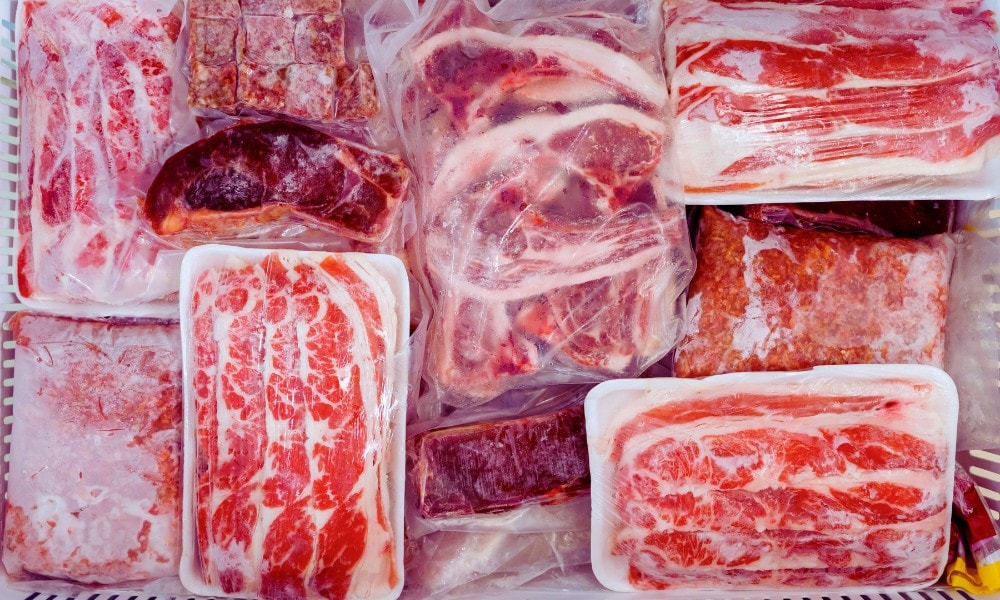
Humidity
Reducing humidity will reduce the growth of bacteria and mold. You do need a little humidity to keep the steak from drying out, but too much will cause the steak to go bad. Try to create a humidity level of around 90%.
Vacuum sealing the steak is the best way to ensure freshness. But if that’s not an option, some airflow can be helpful.
The Bottom Line
Fresh steak is not only delicious but also rich in iron, protein, and other vitamins and minerals. Unfortunately, steaks do not have a long shelf life. If they aren’t stored properly or if you wait too long to cook them, they could go bad.
Bad steaks have a off-putting, rancid smell, may appear green, yellow, or gray, and have a soft and mushy or slimy texture. Remember, it is never safe to eat a spoiled steak, even if you cook it.

